|
|||||
|
|||||||
|
    An initiative of :Stichting Food-Info
|
| Food-Info.net> Products > Edible insects Classes of edible insectsThere are millions of insect species known worldwide. Only 1500 or so are reported edible. Insects are subdivided in many different orders, groups, genera and species. Below some groups of insects and their use as food are described. Butterflies and moths (Order Lepidoptera).The larvae (caterpillars) of many species of moths (and a few species of butterflies) are used as food. They are a particularly important source of nutrition (protein, fat, vitamins and minerals) in Africa . In one country alone, Congo (formerly Zaire), more than 30 species are harvested. Some caterpillars are sold not only in the local village markets, but are shipped on a large scale from one country to another. Caterpillars are canned in Botswana and South Africa . In the rural countryside, they are usually dried in the sun before being sold in the market. Adult moths and butterflies are not eaten – their wings and bodies are clothed with the small flat scales and hairs that make them so colourful. 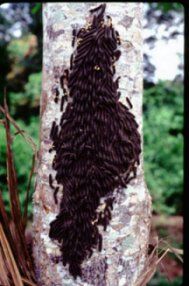 A colony of Imbrasia ertli on the base of a Funtumia tree (Congo). The caterpillar descend from the foliage of the tree each time they moult. It is at this stage they are collected for eating. Normally the whole colony is taken and can either be eaten after roasting or boiling or else can be sun dried for later use. (Source) True bugs (Order Hemiptera).Most of the insects in this order that are used as food live in water. The famous “Mexican caviar,” or ahuahutle, is composed of the eggs of several species of aquatic Hemiptera; these have formed the basis for aquatic “farming” in Mexico for centuries. One species in Asia, the “giant water bug,” is now exported from Thailand to Asian food shops all over the world. 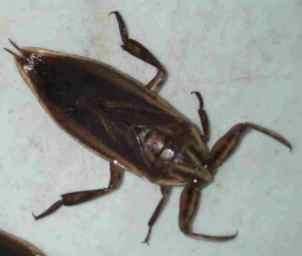 Thai Giant Water Bug (Lethocerus indicus ), eaten steamed, also ground into a paste with chilli and eaten with sticky rice (Source) Cicadas (Order Homoptera).This order includes many insects, such as aphids and leafhoppers, which are important agricultural pests, but only the cicadas are used widely as human food. The nymphs of some species, known as “periodical cicadas,” spend up to 17 years underground where they feed on roots. After 17 years they emerge from the soil, climb up a tree trunk or fence post and molt to the adult stage. Periodical cicadas occur as “broods” which appear above ground only once every several years in any one locality. When they do appear, however, it is often in vast numbers. That is when they are collected as food, sometimes even by school children in the United States . They can be fried. Many cicadas have shorter life cycles, and some of them were collected as food by Indian tribes in what is now the western United States . They are eaten regularly in many other countries, especially in Asia, and some are very large. A cicada from Malaysia even has a wing span of nearly 18 cm ! 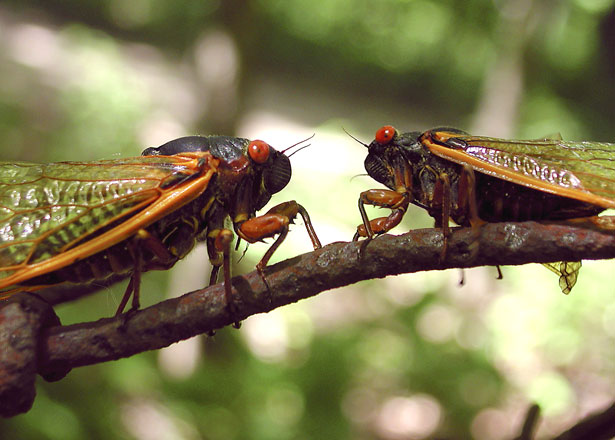 Brood X, one of the North American periodical cicadas (Magicicada sp.). (Source) Termites (Order Isoptera).Termites are most widely used as food in Africa . They are social insects with colonies divided into “castes” that include workers, soldiers, winged adults and a queen. The queen becomes very large and she lays thousands of eggs. Colonies of some species build huge earthen mounds, called termitaria, which may be up to 20 feet high. Periodically, the winged adults emerge in huge swarms, mate while in flight, and then start new colonies. They are highly attracted to lights, even candlelight, and that is one way they are captured for use as food. The wings are broken off, and, fried, termites are delicious. The queens are considered a special treat and are often reserved for children or grandparents  Termites. (Source) Bees, ants and wasps (Order Hymenoptera).With bees and wasps, it is usually the bee or wasp “brood” (larvae/pupae) that is eaten. Most adult bees and wasps don't taste good, but there are exceptions. Canned wasps, wings and all, are sold in Japan, and rice cooked with these wasps was a favourite dish of the late Emperor Hirohito. With ants, it is also the larvae and/or pupae that are usually eaten, but not always. Roasted leafcutter ant abdomens are sold, instead of popcorn, in movie theaters in some places In South America. In some cultures, bee nests are collected as much for their bee grubs as for the honey. In Mexico, certain kinds of ant pupae, known as escamoles, are found on the menu in the finest restaurants. They are served fried with butter, or fried with onions and garlic. Beetles (Order Coleoptera).Beetles have complete metamorphosis. Larvae, pupae and/or adults of many species are used as food. Obviously, people do not eat adult beetles whole; the hard parts (wings, legs and head) are removed during preparation for cooking. The larvae (sometimes called “grubs”) are soft-bodied. 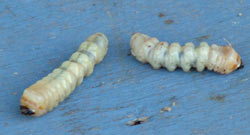 Australian type arlkerlatye grubs (Source) Grasshoppers, crickets, etc. (Order Orthoptera).Grasshoppers and crickets and their relatives have played an important role in the history of human nutrition. Roasting and sautéing are frequently used methods of cooking, after first removing the wings and legs. Seasonings such as onion, garlic, cayenne, chili peppers or soy sauce may be added. Candied grasshoppers, known as inago, are a favourite cocktail snack in Japan. 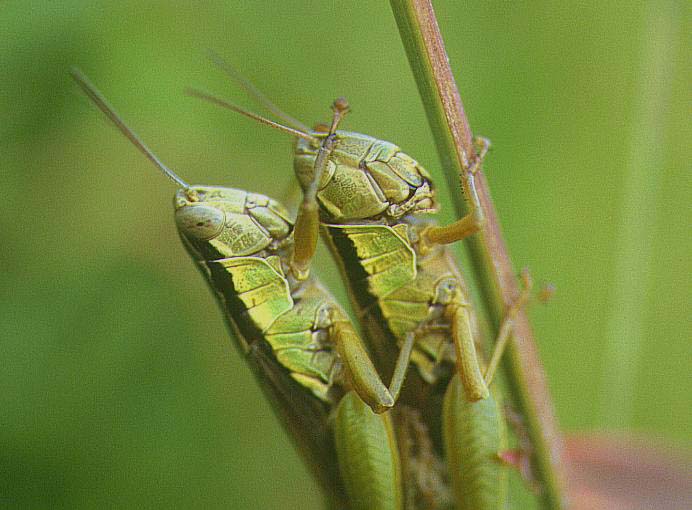 The inago grashopper (Oxya japonica) (Source) Spiders and scorpions (Class Arachnida)Spiders and scorpions are two different orders within the class Arachnida (spider-like organisms), the Aranae (spiders) and the Scorpiones (scorpions). Only a few of the over 40.000 species in this class are eaten. Scorpions are eaten in the south of China and neighbouring countries. They are reared in ‘ranches', mostly in people's homes, then sold in the markets. Scorpions have a woody taste and should be eaten whole, except for the tip of the tail. Spiders are also mainly eaten in South-East Asia. In Cambodia large, tarantula like, spiders are still commonly eaten in the North of the country. 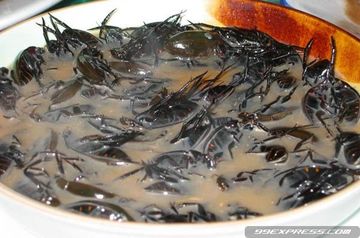 Scorpion soup. (Source) Walking sticks and leaf insects (Order Phasmatodea).These grotesquely shaped insects are used as food in a few places in Asia and in Papua New Guinea. 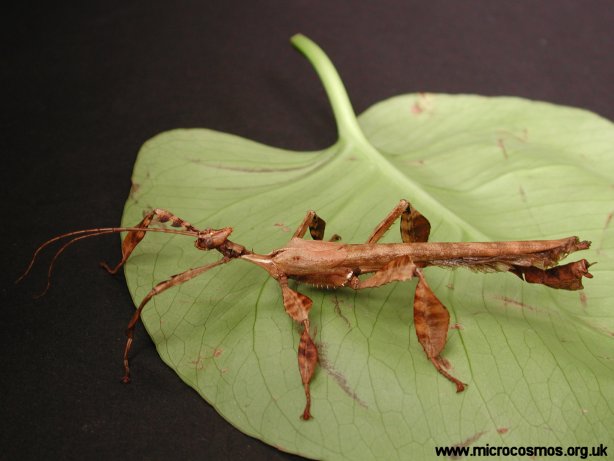 The edible Extatosoma tiaratum from Papua New Guinea. (Source) Adopted from : www.food-insects.com
|
|
| ||
| Food-Info.net is an initiative of Stichting Food-Info, The Netherlands | ||||||